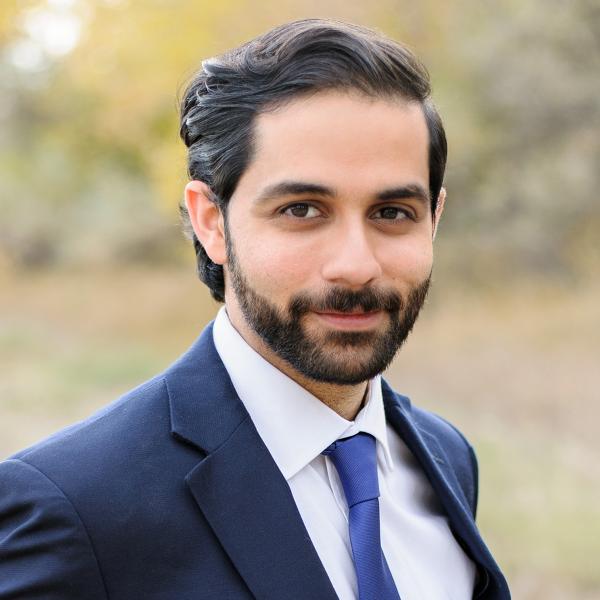This interview transcript has been edited for length and clarity. Watch the video to see the full interview.
Emily Santich:
Can you start by telling us what an insurance commissioner does?
Commissioner Conway:
It changes every day. This morning I was out talking with a group of mortgage lenders about ... challenges in the homeowners insurance market. But earlier this week I was having conversations with folks about the challenges in our health insurance market. Tomorrow I'll probably be talking about auto insurance.
We regulate insurance agents, the licensing of agents, and then their behavior after they are licensed. We license insurance companies, too, and make sure that the insurance companies and their agents comply with State of Colorado laws and regulations. And over the last seven or eight years, we've tried to step up our involvement in policy that impacts the insurance sector in Colorado.
Karam Ahmad:
Colorado is no stranger to wildfires, hail, and other hazards like flooding. How would you describe the impact of climate hazards on insurance availability and affordability.
Conway:
It's a challenge in Colorado right now. It's a challenge that we saw coming two, maybe three years ago, and we've been trying to take steps to be prepared for that challenge. We've got a FAIR Plan, which is an insurer of last resort that was passed during the 2023 session, and we're in the midst of getting that set up. The best way to think about that is that we're standing up a new insurance company. But it's those two natural disasters that you touched on. It's wildfire, but it's hail, too.
Folks don't realize this, but hail is the much bigger driver of losses in Colorado than wildfire in any given year. On average, hail is causing exponentially more damage in Colorado than wildfire does. For example, the hailstorm that hit Central Park earlier this summer is going to cost policyholders something north of a billion dollars. It might get close to $2 billion — that's with a B — not a million.
The Marshall Fire is going to end up being about $2 billion from a loss perspective. But a significant portion of those losses came from the commercial market. When you narrow it down to just the single-family homes that were lost, the cost was about $1 billion. So that one hailstorm that came through and lasted maybe an hour this summer cost about the same … as the Marshall fire did. It's not necessarily that we're seeing more storms, but the hail is bigger, so the storms themselves are more severe.
Hail is really what’s driving our affordability challenges. Wildfire does drive affordability in certain pockets of the state, so we have to find ways to address that as well. But I think finding the solutions for those are going to be a little bit different.
Santich:
How would you describe the current state of homeowners insurance availability and affordability in Colorado? And how does this compare to other states?
Conway:
Let me start with the insurance companies themselves. Insurance companies in the homeowner space in Colorado have lost money eight of the last 11 years — they've paid out more in claims than they've brought in. In some of those years, they paid out a lot more in claims than they brought in. So, the state of the market is that we have affordability challenges that are mainly being driven by hail. We have to figure out ways to help people fortify their roofs to make them a little bit more hail resistant.
When you look at the ranking of states that have the most hail exposure, we are number two, right behind Texas. That's not a good thing. We need to have a longer-term conversation about how we stop the climate impacts that are happening in the country as a whole. But what we can do is adapt to the fact that we have those challenges and find ways to alleviate the pressure that those are causing in our homeowners insurance market.
When it comes to wildfire and dealing with the issues that we're seeing in the market, we have to find ways to encourage insurance companies to write [policies] in more parts of the state. The good news is that states in the western half of the country are all dealing with wildfire, so I hope that we'll have the ability to act collectively and learn from states that are attempting to deal with these challenges in their markets.
Ahmad:
You alluded to the Fair Access to Insurance Requirements (FAIR) Plan. Can you tell us about the development of Colorado's FAIR Plan? What is it? What impact will it have? What other approaches is the division thinking through to improve homeowners insurance availability and affordability?
Conway:
The easiest and best way to think about it is, if you can't get coverage from State Farm, Allstate, Liberty Mutual — from one of those big insurance companies — you’ll be able to find homeowners insurance coverage through the FAIR Plan.
In 2021 before the Marshall fire, we started looking at the state of our market. And we ended up performing a study that looked at the homeowners market in particular. What the study found was that we had relatively robust, if not very robust, coverage at that point. But we were also seeing that the homeowners insurance policies were coalescing into the top five insurance companies in the state. The smaller insurance companies started to pull back. And what that told us was, if any one of those five insurance companies with the biggest market share also started to pull back, we had the potential to have availability problems in Colorado, and people wouldn't have any place to go [to get insurance].
Most of the FAIR Plans were developed back in the 1970s into the 1980s. We’re the first state to stand up a FAIR Plan in about 40 years. We didn't want to be in the situation where we had a crisis on our hands — where we had even pockets of availability problems.
So let's talk about the affordability piece. We’ve held a number of town halls. One of the things that we've talked about is that there might be opportunities to use the amount of hail that we have coming through our state to our advantage. Hail takes out roofs that we have to replace after every storm. But we know that that there are hail resistant types of roofing out there. So we've discussed during these town halls is whether there's an opportunity to help people afford the difference in cost between the standard roof that the insurance company is going to put on and the hail-fortified roof, because that'll have multiple impacts on the market. Right? It'll have the impact for the individual homeowner, because a number of insurance companies give discounts if you have a hail-fortified roof on your home. But that'll also have a systemic impact across the board from a claims perspective, because all of those roofs that are fortified will be taken out of the mix every time a big hailstorm comes through.
I'm very hopeful that if we can get something along those lines up and running. Of course we’ve got to figure out the way to pay for it. But if we can, we can have a meaningful impact.
Santich:
Can you tell us what some of the Division’s priorities are for the next one to three years?
Conway:
I think a key focus over the next one to three years for us will be the homeowners insurance market. Mostly everything that we've talked about up to this point has been focused on single-family homes. There's also going to be a ton of work needed in the commercial market, where condos and townhomes are insured through HOAs. We helped get a bill passed last session to study that market and figure out what solutions we can bring to help people in the HOA market, because some of the increases that have occurred over the last year and a half to two years are just mind-blowing. It's not infrequent that I get a phone call that an HOA is getting a premium increase of 100%, 200%, maybe even 300%. That study is underway. We have to find ways to bring more competition to that market. And we've had a number of stakeholder meetings to talk through that with consumers and the industry.
Santich:
And can you leave us with why this work is important for Colorado's future.
Conway:
Let's just talk about the homeowners front for a minute. It's the old cliché, your home is your castle, but it's more important than that, right? It's where you make memories. It's where you raise families. The fear out there right now is about people potentially losing their homes because their homeowners insurance costs have gone up too much. Or they've lost the ability to even find an insurance company that will write a policy. At the very core, we have to find ways to make sure that they can find coverage. We have to figure out how we can make it more affordable for them, too.
Note: CHI is finalizing a two-part report on key issues at that heart of insurance availability, wildfires, and their impact on health, which is scheduled for release this fall. It will include key considerations we heard from a variety of stakeholders — representatives from state and local government, the insurance industry, wildfire mitigation organizations, and people impacted by wildfires — to ensure that our communities have what they need in the face of more frequent and intense wildfires and natural disasters.


